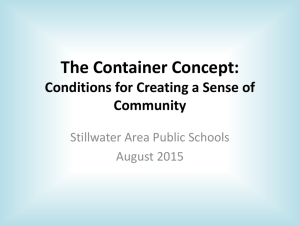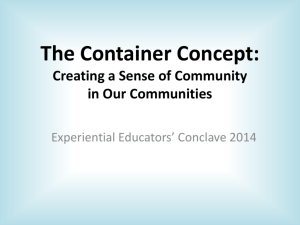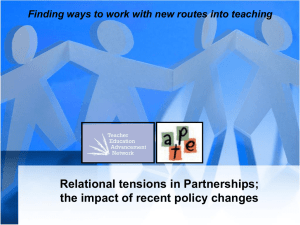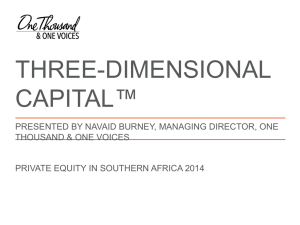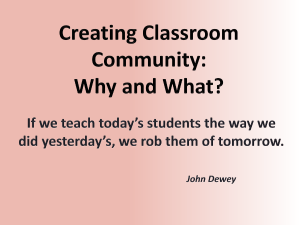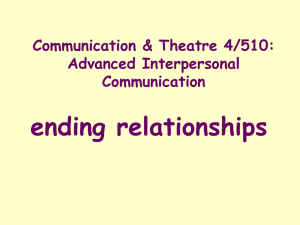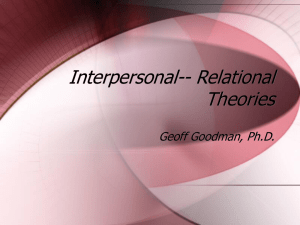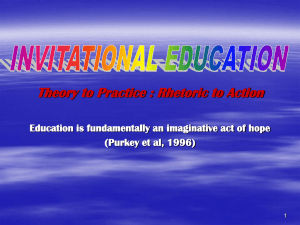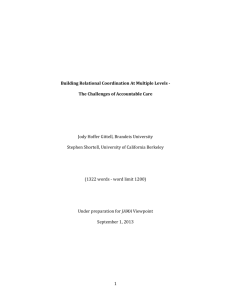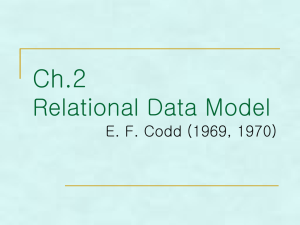Creating Classroom Community
advertisement
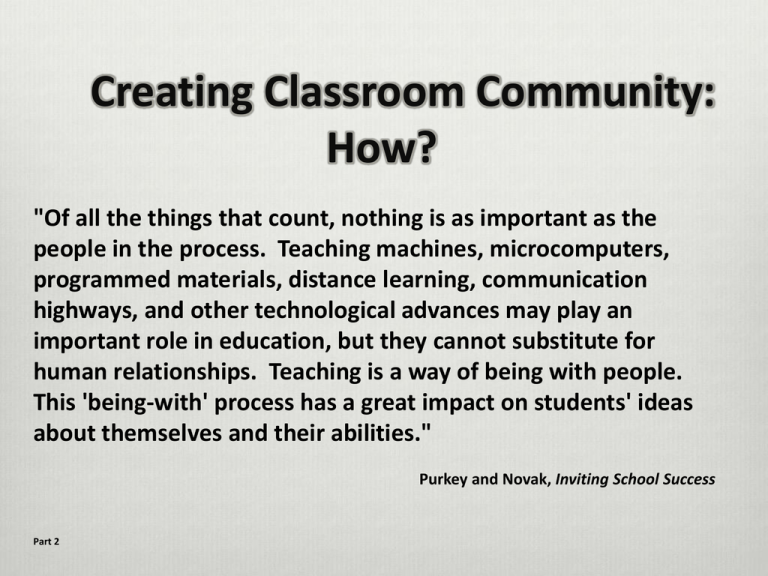
Creating Classroom Community: How? "Of all the things that count, nothing is as important as the people in the process. Teaching machines, microcomputers, programmed materials, distance learning, communication highways, and other technological advances may play an important role in education, but they cannot substitute for human relationships. Teaching is a way of being with people. This 'being-with' process has a great impact on students' ideas about themselves and their abilities." Purkey and Novak, Inviting School Success Part 2 Flow Foundations: What is a sense of community? Why create a sense of community in schools? Creating Conditions/Tools: What are the conditions for a sense of community to develop? How can the conditions help to establish a container for community building? What are some tools for making it happen? Facilitator Knowledge Application Part 2: CREATING CONDITIONS What are the conditions for a sense of community to develop? How can the conditions help to establish a container for community building? What are some tools for making it happen? Conditions for Creating a Sense of Community Community building tools The Best Workshop Ever Facilitators Be prepared Lessons are interactive Facilitate conversation & communication Be engaging Build in breaks and allow for sustenance Turn cell phones off and present Teach with purpose Be playful and laugh Be positive and encourage The Best Workshop Ever Everyone One person talks at a time Have an open mind and good attitude Be positive and encouraging Be on time Be an active listener and respectful of others’ opinions Cell phones off (except for need) Appropriate and respectful language (be kind) The Best Workshop Ever Everyone Be alert and present Watch our sarcastic humor You can only volunteer yourself Be sensitive to differences and learning styles Conditions for Community to Develop Intentionality Invitational Education Time Safe and Trusting Environment Safe Environment Relational Trust Balancing “Me” and “We” Empowerment (Me) Social Commitment (We) Conditions for Community to Develop Positivity Nurturing the Positive Positivity Ratio Ownership Focus (goal setting) 3 R’s: Routines, Rituals, Responsibilities Others? Invitational Education – a Container Framework Making time for relationships Invitational Education www.invitationaleducation.net INVITATIONAL EDUCATION INTENTIONALLY UNINTENTIONALLY INVITING INTENTIONALLY INVITING UNINTENTIONALLY INVITING DISINVITING INTENTIONALLY DISINVITING UNINTENTIONALLY DISINVITING Staff’s Words Be direct and authentic. Use ideas and words that engage children Show faith in children’s abilities and intentions Use concrete images and words children use and understand Try using metaphors Keep it brief Know when to be silent The Power of Our Words Teacher Language That Helps Children Learn Relationship Building Time Teeth Touch Eye Contact Listening Safe Environment Relational Trust Physical/Emotional Safety Physical and verbal violence has to be addressed. Ground rules and social commitments help in establishing boundaries. Instances of harassment, hitting, etc. though, must also be dealt with quickly. PBIS Continuum and PII Approach INVENTION INTERVENTION PREVENTION Relational Trust Conclusions from Research by Anthony Bryk and Barbara Schneider Schools reporting strong relational trust levels in 1994 were three times more likely to eventually improve in reading and math than those with very weak trust reports. By 1997, schools with strong relational trust reports had a one in two chance of being in the improving group vs. a one in seven chance for schools with very weak relational trust reports. From PowerPoint at Expeditionary Learning Schools Conference, 2010 Perhaps Most significantly... Schools with weak relational trust levels in 1994 and 1997 had virtually no chance of showing improvement in either reading or mathematics. From PowerPoint at Expeditionary Learning Schools Conference, 2010 Presence of relational trust was more predictive of improvement than.. School size Teacher educational/professional background Percentage of new teachers Average years of teaching experience Racial & ethnic composition of student body Poverty levels Stability of student body Prior school achievement From PowerPoint at Expeditionary Learning Schools Conference, 2010
